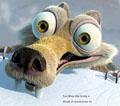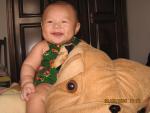Understanding and measuring the shelf-life of food
Edited by R Steele
Woodhead Publishing 2004

下载地址:
Download
Mirror
The shelf-life of a product is critical in determining both its quality and profitability. This important collection reviews the key factors in determining shelf-life and how it can be measured.
Part 1 examines the factors affecting shelf-life and spoilage, including individual chapters on the major types of food spoilage, the role of moisture and temperature, spoilage yeasts, the Maillard reaction and the factors underlying lipid oxidation. Part 2 addresses the best ways of measuring the shelf-life of foods, with chapters on modelling food spoilage, measuring and modelling glass transition, detecting spoilage yeasts, measuring lipid oxidation, the design and validation of shelf-life tests and the use of accelerated shelf-life tests.
Understanding and measuring the shelf-life of food is an important reference for all those concerned with extending the shelf-life of food.
About the editor
Dr Bob Steele is Head of the Packaging Materials Development Section of Food Science Australia.
Contents
Introduction
PART 1: FACTORS AFFECTING SHELF-LIFE AND SPOILAGE
The major types of food spoilage: an overview
R P Singh and B Anderson University of California, USA
Introduction
Physical instability
Chemical spoilage (degradation
Microbial spoilage
Future trends
Sources of further information
References
Shelf-life and moisture management
R Esse and A Saari, Humidipak Inc, USA
Introduction: moisture activity and shelf-life
Water activity and moisture management
The effects of moisture on the storage stability of food
How moisture management systems work: the use of meat jerky
Application of moisture management systems to food and other products
Future trends
References
Temperature and food stability: analysis and control
P S Taoukis and M C Giannakourou, National Technical University of Athens, Greece
Introduction: temperature and the shelf-life of food
Quantifying the effect of temperature on food
Shelf-life testing and indices
Shelf-life prediction and management: time-temperature relationships
Future trends
References
Physiological factors affecting colour and firmness
R E Schouten and O van Kooten, Wageningen University and H Jalink, I F Kappers, J F H Snel and W Jordi, Plant Research International, The Netherlands
Introduction
Physiology of firmness: fruits and vegetables
Methods of improving and maintaining firmness
Physiology of colour: fruits and vegetables
Methods of improving and maintaining colour
Future trends
Acknowledgements
References
Spoilage yeasts
T Deak, St Istvan University, Hungary
Introduction
Characteristics and classification of yeasts
Factors affecting the growth and survival of spoilage yeasts
Diversity and frequency of spoilage yeasts in different foods
Factors affecting the inactivation of spoilage yeasts
Future trends: new technologies to inactivate spoilage yeasts
Sources of further information
References
Factors affecting the Maillard reaction
A Arnoldi, University of Milan, Italy
Introduction: the Maillard reaction (MR)
Factors affecting the Maillard reaction
The Maillard reaction and spoilage: flavour deterioration
The Maillard reaction and spoilage: nutritional losses and browning
Improving shelf-life: antioxidative Maillard reactions
Improving shelf-life: the Maillard reaction and microbial spoilage
Conclusion
References
Factors affecting lipid oxidation
M H Gordon, University of Reading, UK
Introduction: mechanisms of autoxidation
Factors influencing the rate of lipid oxidation
Methods of measuring oxidation in an oil or food
Monitoring changes in oxidation and the use of predictive methods
Future trends
Sources of further information and advice
References
PART 2: MEASURING SHELF-LIFE AND SPOILAGE
Ways of measuring shelf-life and spoilage
T K Singh and K R Cadwallader, University of Illinois, USA
Introduction: understanding and estimating the shelf life of food
Key factors influencing the shelf-life of food
Quality indices for testing the shelf-life of food
Conclusions and future trends
Sources of further information and advice
References
Verification and validation of food spoilage models
G D Betts and S J Walker, Campden and Chorleywood Food Research Association, UK
Introduction: the modelling process
Validation and verification: definitions and use
Evaluation techniques and data transformation
Limitations of models
Future trends
Sources of further information and advice
References
Measuring and modelling glass transition
I A Farhat, University of Nottingham, UK
Introduction
Measuring the glass transition temperature
Modelling the glass transition temperature
Conclusion and recommendations
Sources of further information and advice
References
Detecting spoilage yeasts
V Loureiro and M Malfeito-Ferreira, Instituto Superior de Agronomia and A Carreira, STAB Vida, Portugal
Introduction: food spoilage yeasts
Detection and enumeration: culture and direct count techniques
Detection and enumeration: instrumental techniques
Methods of identifying and characterising food borne yeasts
The use of microbiological indicators to monitor food quality and spoilage
Future trends
Sources of further information
Acknowledgements
References
Measuring lipid oxidation
J W Irwin and N Hedges, Unilever R&D, UK
Introduction: lipid oxidation
Chemical methods for measuring lipid oxidation
Physical methods for measuring lipid oxidation
Chromatographic methods for measuring lipid oxidation
Measurement issues
Correlating analytical measurements with sensory evaluation
Measurement techniques and shelf-life improvement
Conclusions and future trends
Sources of further information
References
Accelerated shelf life tests
S Mizrahi, Technion-Israel Institute of Technology
Introduction
Basic principles
Initial rate approach
Kinetic model approach
Problems in accelerated shelf-life tests
Future trends
References
The design of shelf-life tests
D Man, London South Bank University, UK
Introduction
Assuring the safety of food: the HACCP system
Determining the shelf-life of food
Predicting the shelf-life of food
Conclusions
Sources of further information and advice
References
 wz9th
发布于2007-05-03 13:31:27
wz9th
发布于2007-05-03 13:31:27
 huanggaozhou发布于2007-05-03 16:13:43
huanggaozhou发布于2007-05-03 16:13:43
 david_lxl
发布于2007-05-03 21:07:57
david_lxl
发布于2007-05-03 21:07:57



 qiao2008
发布于2007-08-23 09:54:27
qiao2008
发布于2007-08-23 09:54:27




